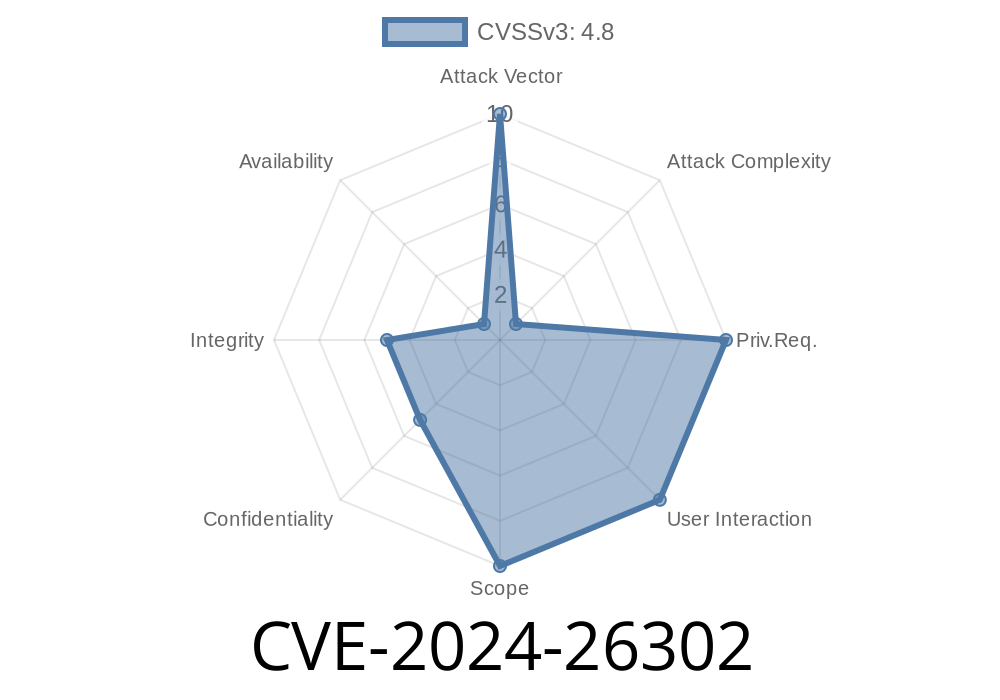Numerous businesses and institutions across the globe rely on ClearPass Policy Manager to help them manage and secure network access for a multitude of users and devices. But as we all know, no system is entirely immune to vulnerabilities. In this post, we're going to unveil a vulnerability (identified as CVE-2024-26302) in the web-based management interface of ClearPass Policy Manager. This vulnerability could potentially permit an authenticated attacker with low privileges to gain access to sensitive information.
By exploiting this vulnerability, an attacker with limited access could retrieve valuable information, which might then be used to gain further access to the network services supported by ClearPass Policy Manager. But don't worry! We're here to help you understand this exploit, its ramifications, and, most importantly, possible remediation steps to secure your system.
A Quick Overview of ClearPass Policy Manager
Before delving into the details of the vulnerability, let's quickly recap what ClearPass Policy Manager does. Developed by Aruba Networks, ClearPass Policy Manager is a widely used access management and network policy solution. It provides a centralized platform for managing and enforcing network security policies, enabling organizations to efficiently control network access for users, devices, and applications across wired, wireless, and VPN infrastructures.
The Vulnerability: CVE-2024-26302
The vulnerability exists in the web-based management interface of ClearPass Policy Manager, and it might allow a remote attacker with low privileges to gain access to sensitive information. The issue stems from inadequate access controls, which could permit an authenticated attacker with minimal access to retrieve confidential data.
For a better understanding of this exploit, let's take a look at a code snippet that demonstrates the flaw:
import requests
URL = 'https://target_clearpass_server/';
API_ENDPOINT = 'api/sensitive_data/'
# Assumes the attacker has low-level login credentials
username = 'low_priv_user'
password = 'weak_password'
# Authenticating and creating a session cookie
response = requests.get(URL + 'auth',
auth=(username, password),
allow_redirects=False)
session_cookie = response.cookies
# Attempting to access restricted API section with low-privileged session
response = requests.get(URL + API_ENDPOINT,
cookies=session_cookie)
# If the access control is not properly enforced, sensitive data may be retrieved
if response.status_code == 200:
print('Sensitive data accessible:')
print(response.text)
else:
print('Access denied')
This is a very high-level example, but it demonstrates the potential consequences of this vulnerability. An attacker with access to low-level credentials might successfully query the restricted API section using session cookies, leading to the exposure of sensitive data.
The Exploit's Consequences
A successful exploit of this vulnerability could lead to severe implications for businesses and institutions. By retrieving sensitive information, an attacker could gain further access to network services supported by ClearPass Policy Manager. This might result in unauthorized network access, additional attack vectors, or even the compromise of critical systems and infrastructures.
Original References
For further information and clarification about this vulnerability, you can refer to the following original references:
1. CVE Database Entry - CVE-2024-26302
2. Aruba Security Advisory - ClearPass Policy Manager Vulnerability
Mitigating the Vulnerability
In order to mitigate this vulnerability, it's crucial to apply the latest security patches and updates for ClearPass Policy Manager. As a best practice, ensure that your systems are regularly updated and consider following the principle of least privilege – only granting users the necessary privileges required to perform their tasks.
Conclusion
It’s essential to stay informed about such vulnerabilities and take appropriate remedial actions to safeguard your organization's network security. By applying necessary security updates and adhering to sound security practices, you can minimize the risk of falling prey to this or any other exploit.
Timeline
Published on: 02/27/2024 23:15:07 UTC
Last modified on: 02/28/2024 14:06:45 UTC
